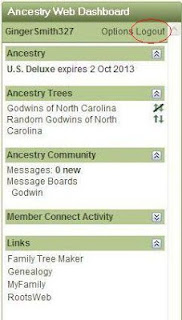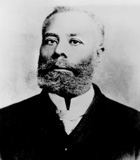I have been testing the waters with Family Tree Maker 2012
lately in order to collaborate more easily with some of my cousins and fellow
family history researchers. Mostly I
have been helping them enter their genealogy into their online Ancestry.com
family trees so they can share with their ftDNA Family Finder autosomal test
matches. The Family Finder test produces hundreds of matches to 1st
– 5th cousins around the country and in some cases, around the
world. These are people you share some common DNA and ancestry with. This test is usually most valuable to folks
who have a pretty complete family tree and can be used to verify ancestral
lines or to fill in holes in their trees. Some people are using this test to
find missing relatives or adoptive parents as well. Success in finding or
verifying relatives with this test hinges on the validity and completeness of
one’s family tree.
Ancestry.com’s new Family Tree Maker 2012 software has a new
unique syncing capability which allows the tree owner to sync between their
desktop version of their Family Tree Maker software and their Ancestry.com
online family tree. Photos, source
citations and historical records are also synced and downloaded to each file
during the sync. (Stories and comments stored in the online tree, however, are
not downloaded during the sync.)
Managing a desktop file and online tree for a file that is
accessed by multiple people has been a challenging project. This is just one in
a series of posts that describes some of the issues I’ve run into – or quite
the opposite – some of the cool things I’ve learned how to do with the software
and the benefits of it.
In this post, I describe how to download my cousin’s online
tree to my Family Tree Maker software that resides on my desktop and then
export it as my own file to dropbox and upload to my own Ancestry.com online
family tree.
Downloading The Tree:
One of the limitations to the syncing feature is that you
cannot download a tree that does not belong to you from the online Ancestry.com
ancestry member trees in any format other than a GEDCOM.
A GEDCOM only supports plain text which will not handle the
transfer of photos and many custom fields that various genealogy software
packages employ.
Even if you have editor rights to the tree, you cannot
download it and sync to your own Family Tree Maker software. The only way to get around this is to
1) log into your Family Tree Maker software with
the tree owner’s Ancestry.com account and download and sync that way or
2) have the tree owner download their tree to their
own copy of Family Tree Maker software and then save the Family Tree Maker
software file to dropbox where you can have access to it and open it. The
limitation of option 2 is that the tree owner has to have Family Tree Maker
software installed on their computer and two or more people cannot open the
Family Tree Maker software file at the same time.
Because my cousin, who is the owner of the tree I wanted to
download and access with my Family Tree Maker software, does not have a copy of
Family Tree Maker software, I went with option number 1 – to log into my Family
Tree Maker software with her Ancestry.com credentials. Doing so allowed me to
download and sync her tree to my Family Tree Maker software.
You can log in and out of your Family Tree Maker software by
clicking on the “Plan” workspace across the top and then clicking on the “log
out” link on the right side of the page under the Ancestry Web Dashboard.

I can make changes to her tree once it is downloaded into my
Family Tree Maker software regardless of whose account I am logged in
with. We both have paid accounts, so I
can add records from within my Family Tree Maker software using either account.
If only I had a paid account, then I could stay logged in under my account and
add records that would then be added to the online tree when it is next synced.
However, in order to sync, I have to log in under my cousin’s account every
time. This can be kind of annoying after a while.
Copying Family Tree Maker File:
Instead of having to log into my Family Tree Maker software
with my cousin’s Ancestry.com account every time I want to sync her file with
her Ancestry.com online tree, I could just create my own online tree and stay
logged into my own Ancestry.com account whether I am using the Ancestry.com
online trees or my desktop Family Tree Maker software.
Here’s how I created a new online tree:
1) From my Family Tree Maker Software, I exported
my cousin’s entire file. This is the file that was created from the
Ancestry.com online family tree via the syncing process.
2) I saved the file (with the *.ftmb extension) to
dropbox
3) I restored the file by going to File / Restore
and selecting the *.ftmb file I saved to dropbox in step 2
4) I gave it a new name and saved it to dropbox
Creating a New Online Family Tree:
A new Family Tree Maker file has now been created from the
original tree file that was downloaded from Ancestry.com and synced with my
Family Tree Maker software. I can log in with my own Ancestry.com account
credentials and the “Upload and Link to Ancestry” button is now active within
the Plan workspace in my Family Tree Maker software.
Clicking
this button will then upload my new tree to my Ancestry.com online account and
create a new online family tree for me. This will be viewable to the public. My
citations and photos will upload to the online tree as well.
The tree summary on the top is what the original tree that
I downloaded from my cousin’s site looked like. The summary on the bottom is
what the tree looked like that I downloaded from my cousin’s Ancestry.com site,
exported to my Family Tree Maker software, restored, and uploaded to my own
Ancestry.com site:
The stories and comments were lost when I created the new
tree. They were probably lost when the tree was synced with my Family Tree
Maker software. They weren’t “lost” per say; these two functions of the
Ancestry.com online family trees do not transfer from the online tree to the
desktop Family Tree Maker software tree version as they are only a function of
the online tree. All of the media files, including the photos and the historical
records which include the census records, did transfer from the old tree to the
new tree.
Advantages:
The advantage of creating a new tree from a previously
downloaded Ancestry.com member tree is that I do not have to log in to the
original tree owner’s Ancestry.com account to sync between their online tree
and my Family Tree Maker software. Now I can sync between my own online tree
and my Family Tree Maker software without having to log out of my account and
logging in to the original tree owner’s Ancestry.com account.
Also, I can see how this could be advantageous over the use
of GEDCOMs which only transfer text between programs: I could download my
Family Finder DNA matches’ trees, load them into my Family Tree Maker software
and incorporate into my own family tree. With that, I could retain their photos
and attached historical records with little fuss.
Disadvantages:
The disadvantage of creating a new online tree from a
previously downloaded one is that you lose the stories and comments that were
stored with the original online tree. These are not populated in the newly
created online family tree.
Another limitation I learned about the Family Tree Maker
software is that you can only sync from one computer, even though the file is
saved in dropbox. I am not sure why this is or how it could be fixed or if it
will be fixed in the future by Ancestry.com. If you know of any workarounds for
this, please email me at ginger dot reney at gmail dot com or leave me a
comment below.
Conclusion:
There are both advantages and disadvantages to this process;
like with anything custom you wish to do, there are usually some technical
difficulties involved with both the Ancestry.com online trees and the Family
Tree Maker software. But overall, these systems are flexible and powerful and
give the users some elements of control over what to do with their data.
Update:
Check out Russ Worthington's companion post on how he collaborates using Ancestry.com's online member trees and his Family Tree Maker Software in
Cousin Collaboration. Thanks Russ!
















.jpg)










